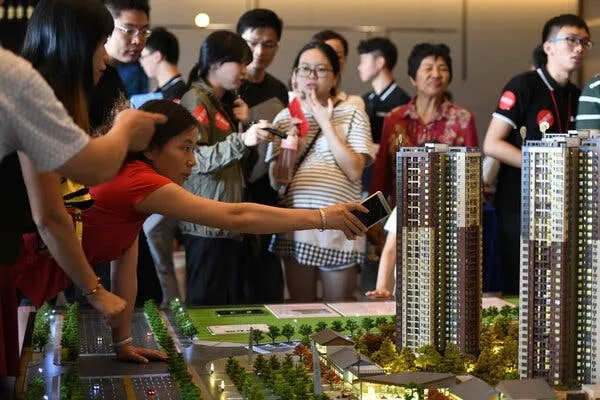中国人排第一,8个月内买走新加坡900套公寓,“这里豪宅便宜”
2022年1月到8月内,中国人总共买走新加坡高达932套私人公寓单位
|1 min read

<p>疫情爆发后的这两年,频频听说有中国人到新加坡买房。通常一出手就是买“一打”。</p> <p>具体买了多少,外人并不清楚。</p> <p>不过就在这两天,中国买家最新购买数据出炉,</p> <p>2022年1月到8月内,中国人总共买走新加坡高达932套私人公寓单位。</p> <p>根据房地产公司橙易产业(OrangeTee & Tie)的最新报告,今年新加坡的外国交易总量已经接近疫情前水平。</p> <p>截至8月交易达到1万4000多笔。其中,中国买家占2022年总交易量的6.7 %,头八个月总计买了932套私人公寓。</p> <p>在价值500万新元以上的豪华公寓中,也是中国人买的最多。交易达81套豪华公寓,占销售量19.2 %。</p> <p><img src="“https://i.imgur.com/xGasg5r.png“alt=““/"></p> <p>排在第二位的是美国买家,共买入34套。</p> <p>从整体购买群体来看,2022年新加坡房产市场中最大的外国买家群体排名如下: </p> <ol> <li><p>中国 </p></li> <li><p>马来西亚(今年头8个月购买数量少中国买家2倍) </p></li> <li><p>印度</p></li> <li><p>美国</p></li> <li><p>印度尼西亚 </p></li> </ol> <p>此外,新加坡最受外国买家青睐的房产项目也公布了:</p> <p>最畅销的新项目是 Canninghill Piers(43 个单位)、The Avenir(30 个单位)、Riviere(30 个单位)和 Irwell Hill Residences(16 个单位)。</p> <p><img src="“https://i.imgur.com/5LBe1KE.png“alt=““/"></p> <p>最受欢迎的转售项目是 Nouvel 18(13 个单位)、D'Leedon(10 个单位)、Marina One Residences(9 个单位)和 Wallich Residence(9 个单位)。</p> <p>另外,外国买家最青睐新加坡第10区的房。其次才是第9区、第3区、第6区。</p> <p>这几个区域都是相对比较贵的房。因为大部分的跨国企业,高校和传统富人区都集中在这些区域。</p> <p><img src="“https://i.imgur.com/Vpc41bO.png“alt=““/"></p> <p><strong>于上述外国买家来说,新加坡私人公寓</strong><strong>价格的“最佳点”介于80万新元到200万新元之间。</strong></p> <p>据分析,尽管新加坡去年年底上调了外国人买房的额外买方印花税。</p> <p>但在这些外国有钱大佬眼中,新加坡豪宅有升值空间,涨税以后,新加坡的房子还是比其他国际城市便宜。</p> <p>不仅如此,<strong>对于真正的富豪,即那些高净值人士来说,新加坡当局在上周推出的新降温措施,预计对他们“不太可能产生重大影响”</strong>。</p> <p>话说回来,新加坡房产如此火热,那这些大佬严重的私人公寓到底有多“便宜”, </p> <p>目前,新加坡市中心乌节路地段的私宅多数200万新起步,豪中豪住宅的价格有的也能飙到800万新元左右。</p> <p><img src="“https://i.imgur.com/3mbsI7o.png“alt=““/"></p> <p><img src="“https://i.imgur.com/K5BNde3.png“alt=““/"></p> <p><img src="“https://i.imgur.com/ARcgVfc.png“alt=““/"></p> <p>上述价格还是不含税的。</p> <p><strong>假设买了120万新元的房,则外国人需要交给新加坡买房税40万8000 新元。</strong></p> <p>100万以上的买房税为房价的 34 %(4 % 的买房印花税 + 30 % 的额外买房印花税)。</p> <p>所以要买新加坡的私人公寓,想要买100万出头(约人民币500万)的房子,备好200万(约人民币1000万)比较理想。</p> <p>新加坡房产确实是个香饽饽。尽管新加坡当局一再出台降温措施,但对于不差钱的人来说,影响无关痛痒。</p> <p>不过新加坡的政策并不是一成不变。 </p> <p>目前,新加坡已经在研究一个新措施,即是否应该公开有关在新加坡拥有土地的海外实体的信息,以打击洗钱和恐怖主义融资。</p> <p><img src="“https://i.imgur.com/TqpkHzH.png“alt=““/"></p> <p>还将考虑向公众提供有关拥有财产的空壳公司的实益所有权的信息。</p> <p>简单理解就是,如果这个措施施行,那么新加坡的外国人买房市场将进一步透明化。 </p> <p>来新加坡置办房产的外国实体经营公司,购买、出售、转让都要经过新加坡官网网站程序。 </p> <p>这算是一种监督手段。</p> <p>新加坡正在考虑的这项措施,已经在英国生效。也就是说,在英国拥有房产土地的外国经营者,必须实体登记。</p> <p><img src="“https://i.imgur.com/MlGueQu.png“alt=““/"></p> <p>适用于拥有或收购“合格房地产”的海外实体,一般包括住宅和商业、永久业权和租赁物业。</p> <p>拥有人必须提供其姓名、出生日期和国籍、通常居住地址、服务地址以及个人成为可登记实益拥有人的日期。</p> <p>英国法律规定,除出生日期和居住地址以外的所有信息都必须公开,并且海外实体必须每年更新信息。</p> <p>那么新加坡会不会实行呢,这个问题就要交由专业的人他探讨了</p>

